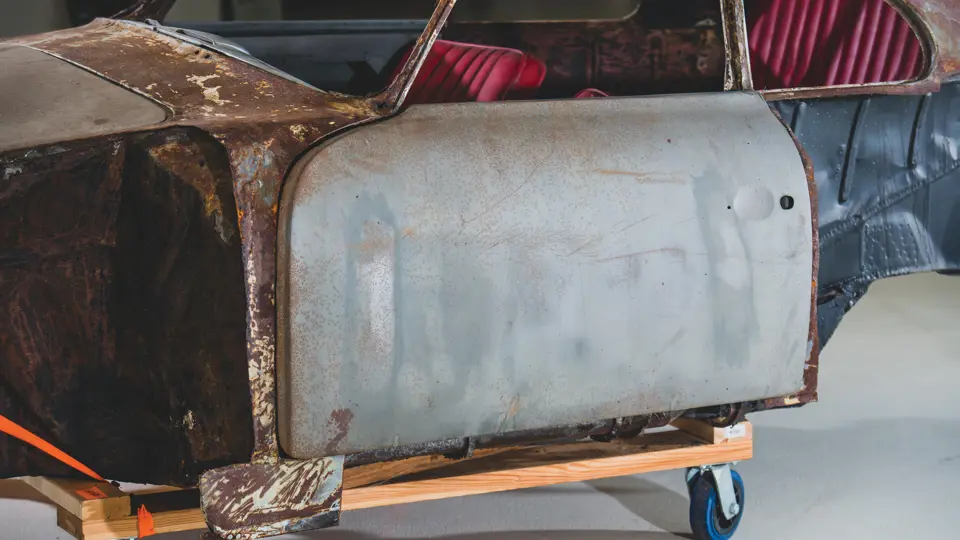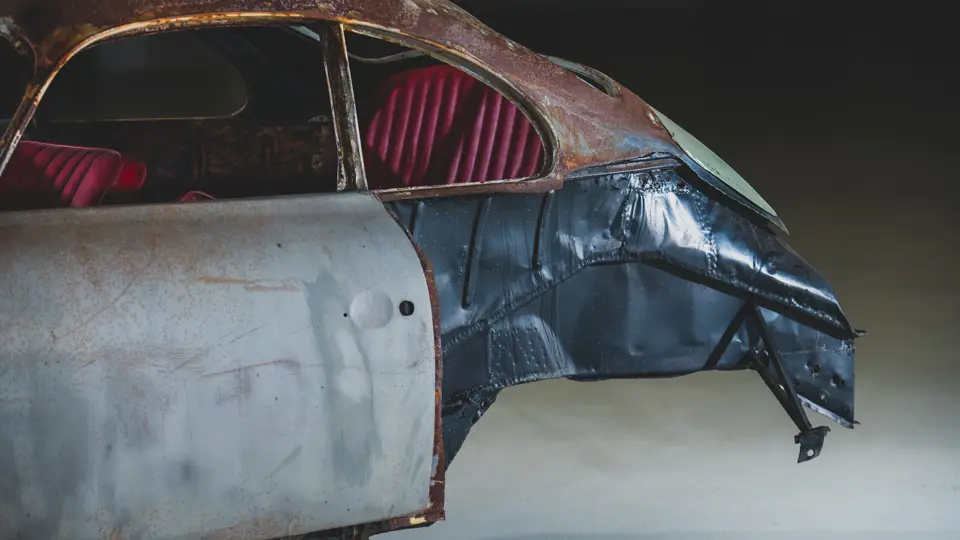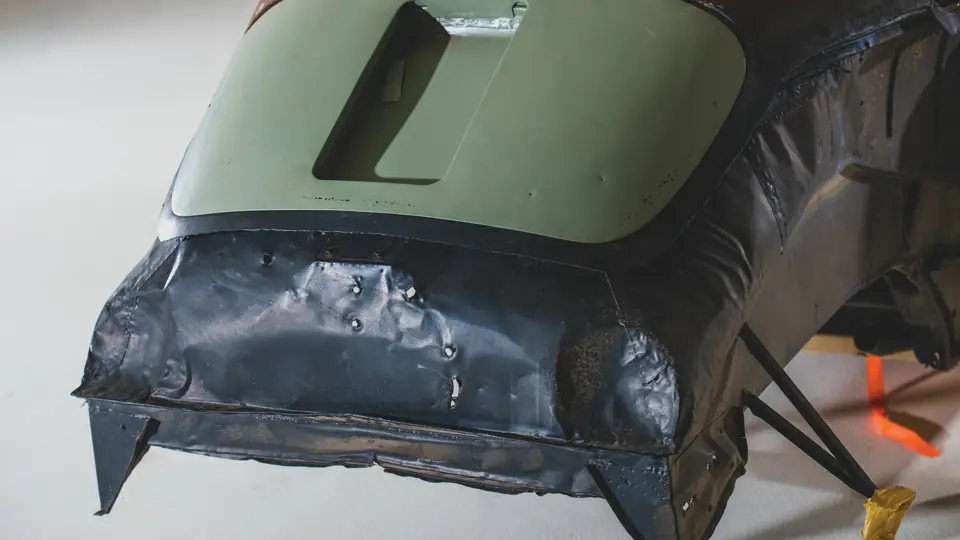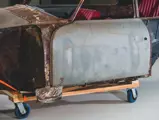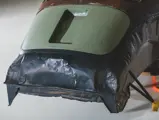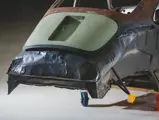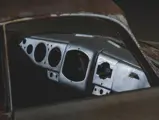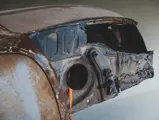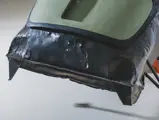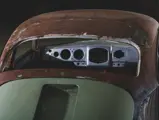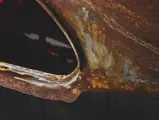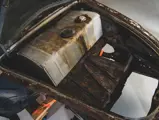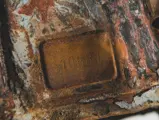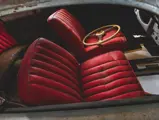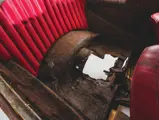
1951 Porsche 356 Pre-A 'Split-Window' Coupe by Reutter
{{lr.item.text}}
$98,000 USD | Sold
{{bidding.lot.reserveStatusFormatted}}
- One of just 749 1951 Pre-A “five-digit” Reutter coupes
- Very rare and desirable 356; in need of complete restoration
- Ideal to return to original specification or as a unique outlaw
- Thought to have possibly raced in period throughout Europe and Mexico
- Includes copy of Kardex and Porsche Certificate of Authenticity
As the calendar rolled over to 1950, the still-tiny German automaker launched by Dr. Ferdinand Porsche only two years earlier was just dipping its toe into greater production of a new automobile. While it utilized many components from the simple Volkswagen Beetle—which Dr. Porsche had also largely designed—it would meet his definition of what a sports car should be. Although the Type 356-001 was a one-off mid-engined roadster, the 356/2 coupes of 1948–49 were rear-engined, their body shells hand-hammered of light alloy sheet over a wooden buck in an old Austrian sawmill. These little coupes would help establish a benchmark for high-quality automobiles that lives to this day.
A contract was received to construct 50 of these aerodynamic coupes at Gmünd before the company relocated to the outskirts of Stuttgart. There, a modest assembly line and a handful of employees stamped, cut, and welded sheets of steel into rolling chassis that both Reutter and Karosserie Gläser would clothe in coupe and cabriolet bodies. Mechanically, these cars, labeled Type 356/2, were quite similar to those built at Gmünd. Powered by 40 hp Type 369 air-cooled flat-fours of 1,086 cc, which were based largely on their Volkswagen forebears, by 1951 these motors had been improved with new aluminum cylinders with chrome bores and had dual carburetion. Power rose to a still-modest 44 hp. For the first time, Porsche adopted hydraulic brakes. The front suspension was pure VW, and by then, tubular shocks were used at both ends. Porsches produced in 1950 and 1951 are recognizable by their two-piece, flat-glass windshields. The “Model 51” appeared in March of that year, with chassis numbers expanding to five digits but otherwise unchanged.
Recognizing early on that racing could help establish a broader reputation and stimulate sales, Porsche accepted an invitation to enter a pair of his aluminum-shelled racing coupes, designated 356 SL (for Sports Leicht), at the 1951 24 Hours of Le Mans. One was damaged in night-time practice, but the other, co-driven by Paris Porsche distributor Auguste Veuillet and Edmond Mouche, persevered to win the Sport 1.1 class and finish 20th overall, giving Porsche the first of what would become an amazing string of wins at the Sarthe. The 356 would quickly become a popular small-displacement racer in both amateur and professional events throughout the world.
Chassis 10681 is a quite early Model 51 coupe, the 150th of just 749 built at Reutter’s shop in Zuffenhausen, right next door to Porsche. Delivered on 26 June 1951 and sold new in Germany to Frankfurt Porsche dealer Walter Glöckler, this little Reutter-bodied split-windshield coupe is in need of a complete restoration—but its rarity makes that very worthwhile. According to its Kardex, it was painted Radium Green (R510), trimmed in Grey-green leatherette (325), and was fitted with engine number 20217. The gearbox number was not recorded. The Kardex notes extensive service entries listed up until 30 October 1952, with 40,000 km reported as per the factory records. It is thought, though not currently confirmed, that Glöckler may have retained the car and raced it throughout Europe.
The car was eventually exported to Mexico, and over the years it was registered to a series of owners in the Mexico City area. There is no information as to the fate of the original motor, but an accompanying document dated 1966 shows an engine change from 30982 to number P3560163. The current uninstalled Volkswagen engine, number 1080150, doesn’t appear in the registration paperwork until later in the ’90s, showing that this car went through at least three powerplants, suggesting a hard life in addition to its battle-wounded body. A Spanish-language historical account accompanying the car suggests that engine number 30982 was associated with a Carrera Panamericana entry, but this claim has yet to be verified.
There follows a period covering the 1970s during which ownership is unclear, but registrations pick up again in 1985 with Sr. Fermin Osnaya Rubio. The next owners were Willy and Karen Caso Priego Koenig of Cuauhtémoc, who bought the car in 1987. In late 1988 Mr. Koenig wrote to Porsche seeking details of the car’s history. It appears that Sr. Koenig then prepared the car for racing, adopting some of the visual details of the Gmünd 356 SL racing coupe, including wheel spats, louvered rear quarter window covers, and a front air vent. Along the way, the car was offered for sale locally, with remarks suggesting that this car had a Carrera Panamericana history.
It was in this form that in 2004 it was advertised for sale on the Samba website. The listing caught the eye of avid Porsche collector John Dixon, who purchased the car sight unseen. It arrived in what could charitably be described as “thrown-together” condition. Fascinated by the possibility that it might be a veteran of the Carrera Panamericana, Dixon sent the car to GK Restorations in Florida, where disassembly began. It was found to be in rough condition, with extensive structural corrosion. Several interior wood trim items bear the last two digits of the chassis number. This project is supplied with a Certificate of Authenticity, a copy of its Kardex, Mexican registrations, factory correspondence, historical references, and other documents and Bills of Sale covering the years 1960 through 2004. There are also nine boxes of parts taken from the car during disassembly.
It should be emphasized that there is at present no documentation that this car ever ran in the Carrera Panamericana, although Mr. Koenig raced it in its modified form in the 1990s. However, its value is sustained by the fact that very few 1951 split-windshield coupes survive in any condition, and a patient restoration should appeal to the serious collector.
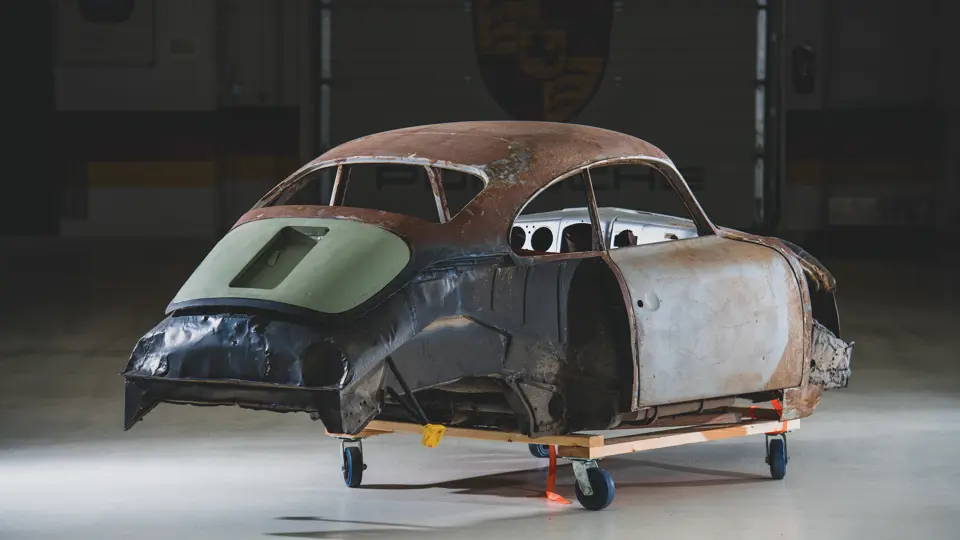

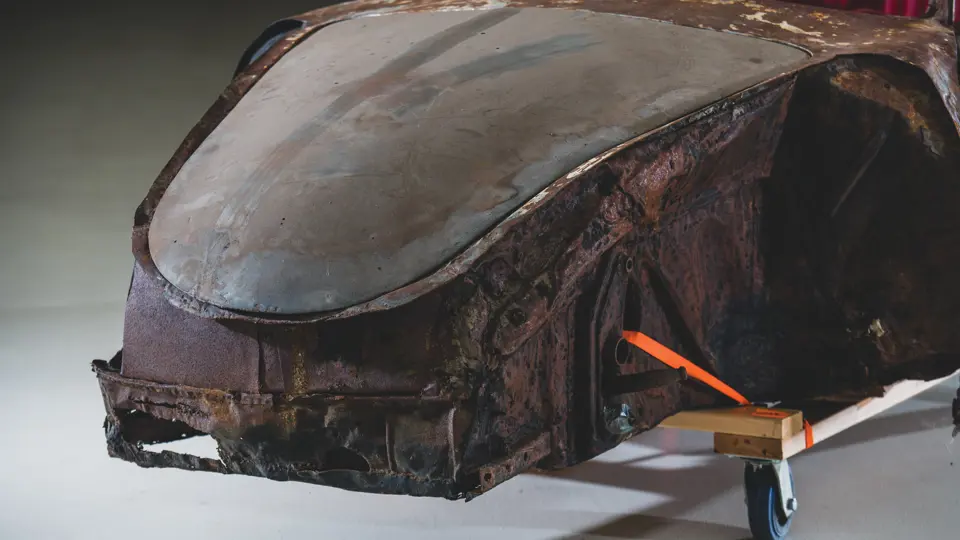


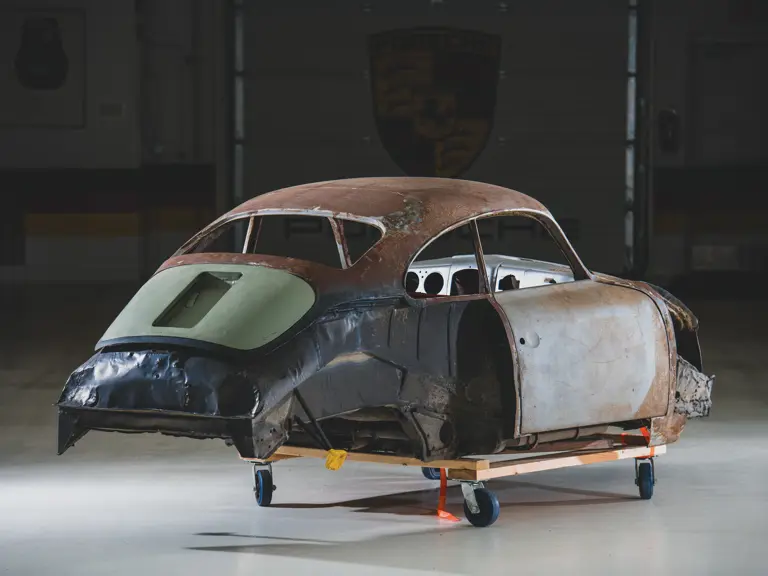
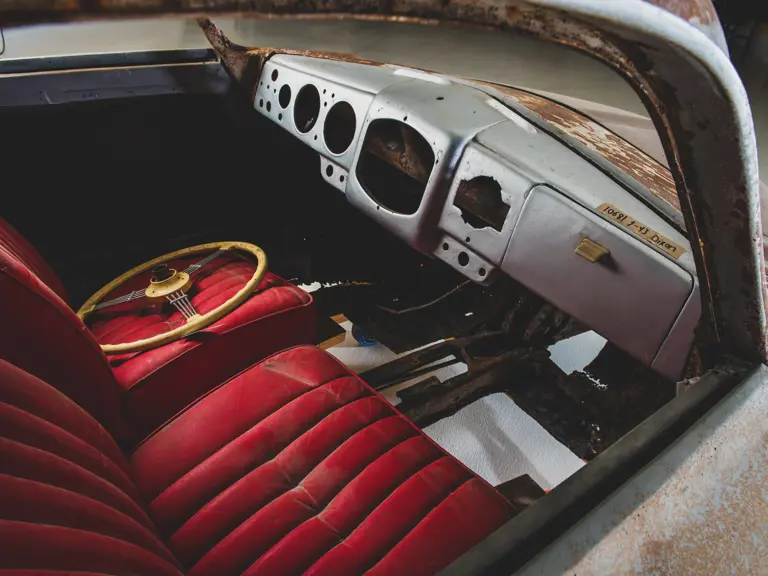
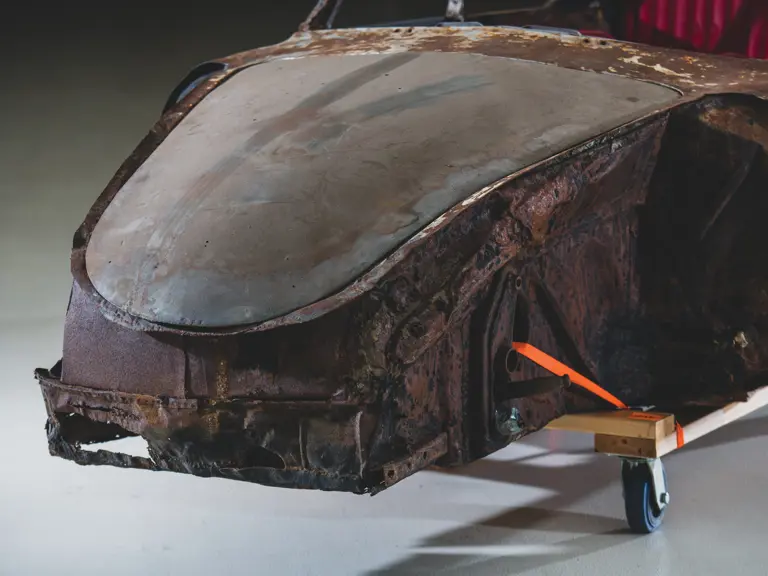
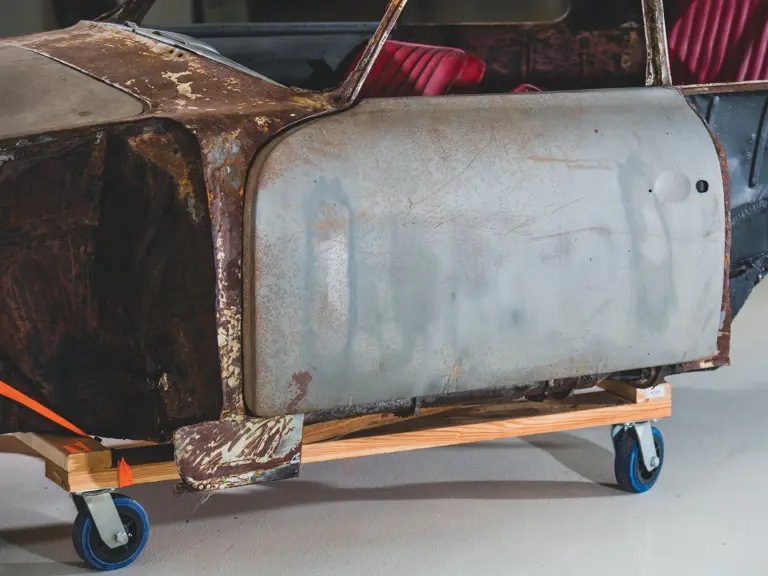
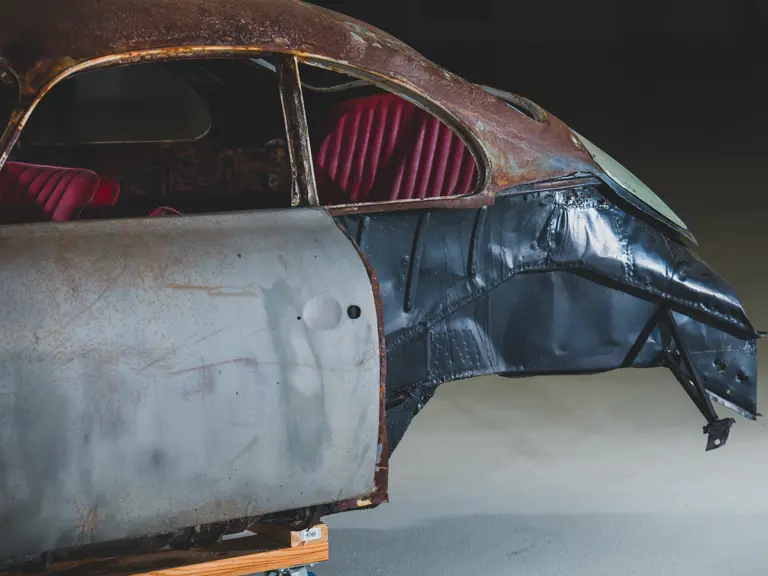
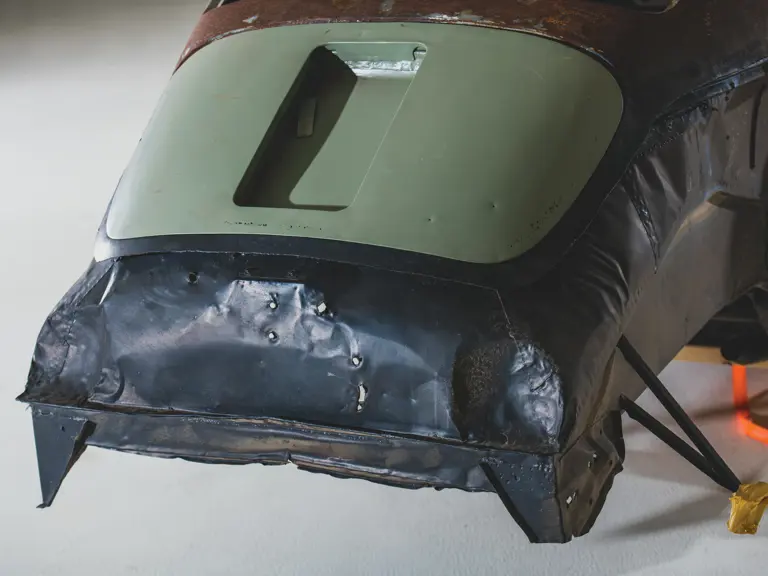

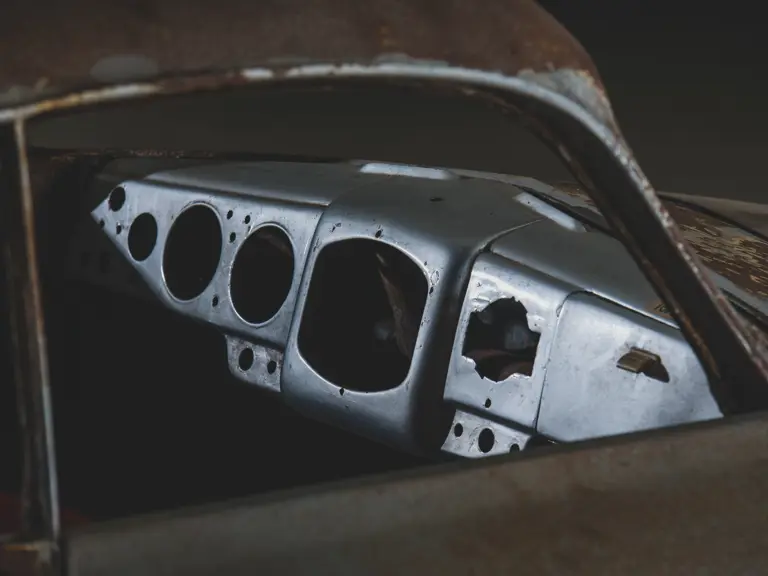


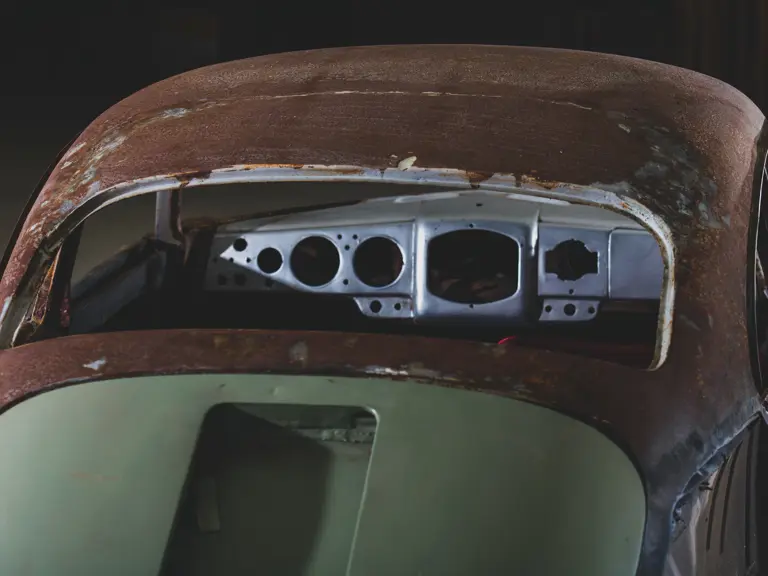
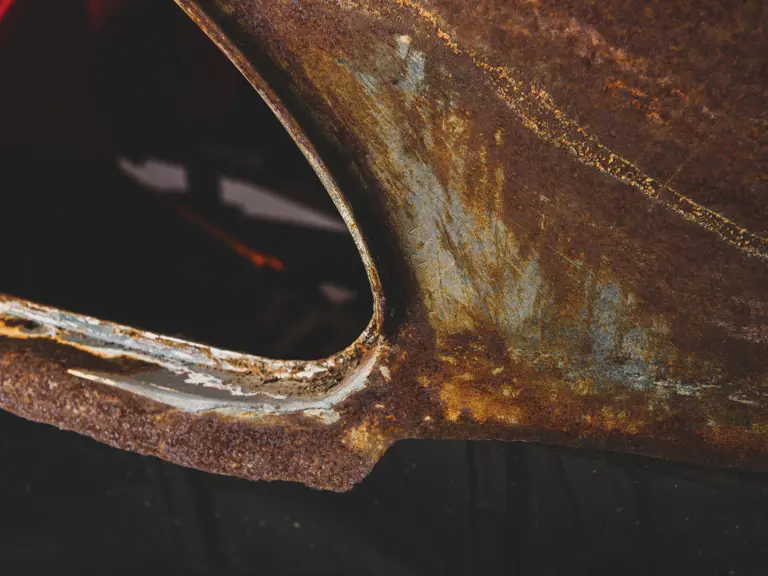

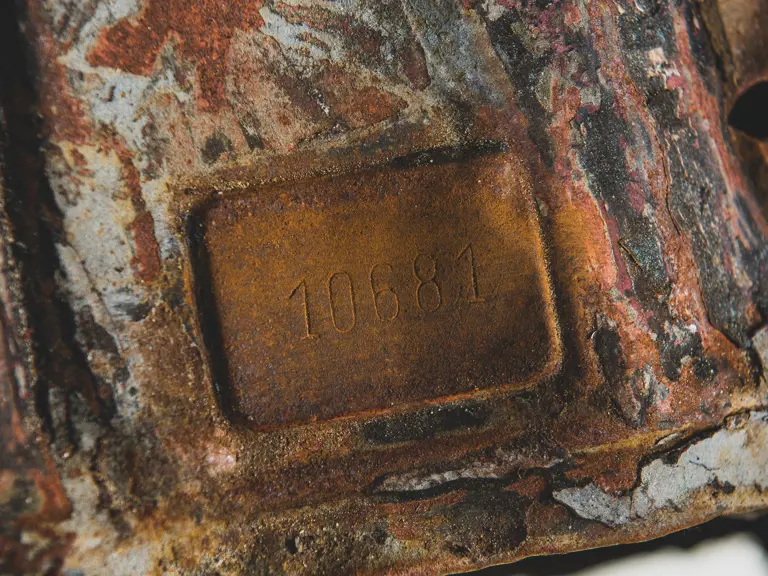
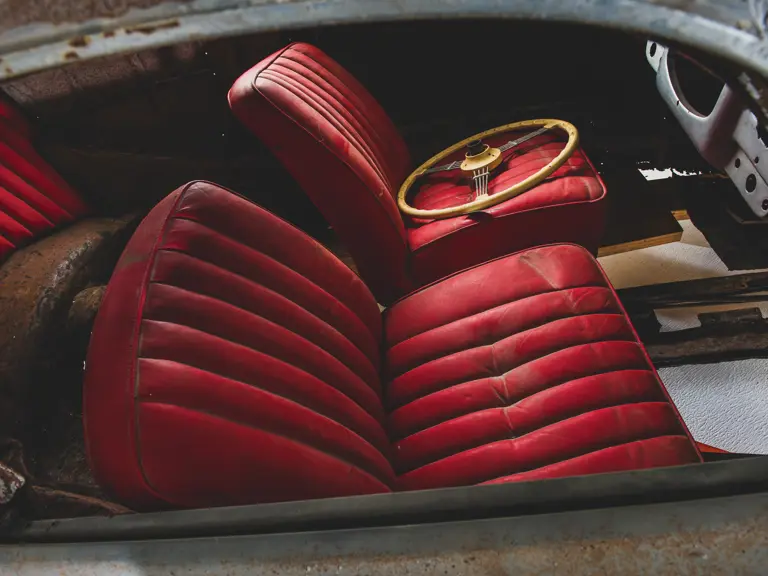
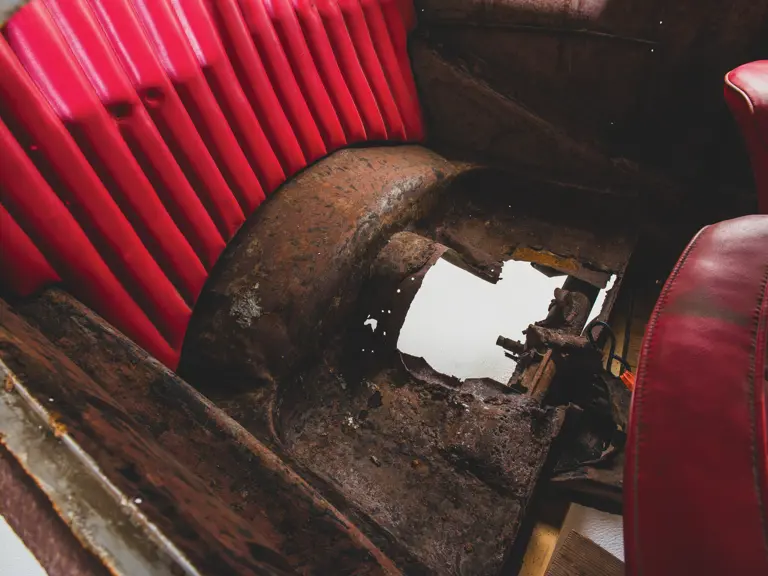
 | Dayton, Ohio
| Dayton, Ohio
